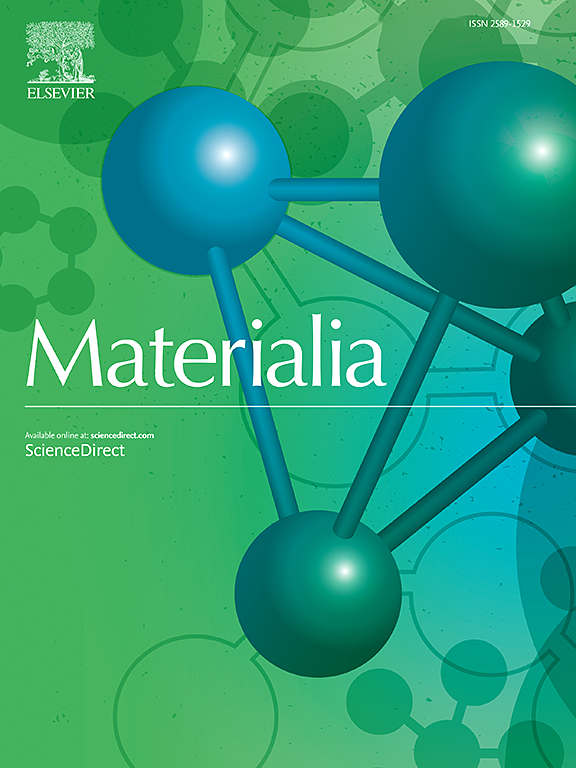Microstructure formation of a new Al-4Mn-3Ni-2Cu-1Zr aluminium alloy during electron beam powder bed fusion
IF 3
Q2 MATERIALS SCIENCE, MULTIDISCIPLINARY
引用次数: 0
Abstract
There are only a limited number of studies devoted to the investigation of the processing and microstructure of high strength aluminium alloys fabricated by EB-PBF in comparison with laser beam powder bed fusion (LB-PBF). Most of the studies were conducted using existing grades. Herein, we investigate the processability and the microstructure of a new Al-4Mn-3Ni-2Cu-1Zr alloy fabricated by EB-PBF. Dense crack-free samples are produced with a relative density ≥ 99.7 % measured using X-ray computed tomography (XCT). The microstructure is found to be relatively homogeneous along the build direction except in the topmost layer and consists of equiaxed grains with a size ≤5 µm. The equiaxed grains are correlated to the presence of L12-Al3Zr cubic-shaped precipitates. Those primary precipitates promote the heterogeneous nucleation of Al grains because of the low misfit in lattice parameter between the Al FCC phase and the ordered FCC L12-Al3Zr phase. The microstructure is decorated by a large fraction of intermetallic particles, nearly 20 %. As many as four different intermetallics were identified by correlating the X-ray diffraction analysis with elemental mapping using energy dispersive spectroscopy. Observations conducted in the topmost layer provide key pieces of information to shed light on the microstructure formation during EB-PBF. The hardness gradient revealed when approaching the top layers is attributed to the progressive depletion in Mn of the supersaturated solid solution inherited from solidification due to the intrinsic heat treatment undergone by the sample during EB-PBF.

求助全文
约1分钟内获得全文
求助全文
来源期刊

Materialia
MATERIALS SCIENCE, MULTIDISCIPLINARY-
CiteScore
6.40
自引率
2.90%
发文量
345
审稿时长
36 days
期刊介绍:
Materialia is a multidisciplinary journal of materials science and engineering that publishes original peer-reviewed research articles. Articles in Materialia advance the understanding of the relationship between processing, structure, property, and function of materials.
Materialia publishes full-length research articles, review articles, and letters (short communications). In addition to receiving direct submissions, Materialia also accepts transfers from Acta Materialia, Inc. partner journals. Materialia offers authors the choice to publish on an open access model (with author fee), or on a subscription model (with no author fee).
 求助内容:
求助内容: 应助结果提醒方式:
应助结果提醒方式:


